7. The Last Laugh (1924)
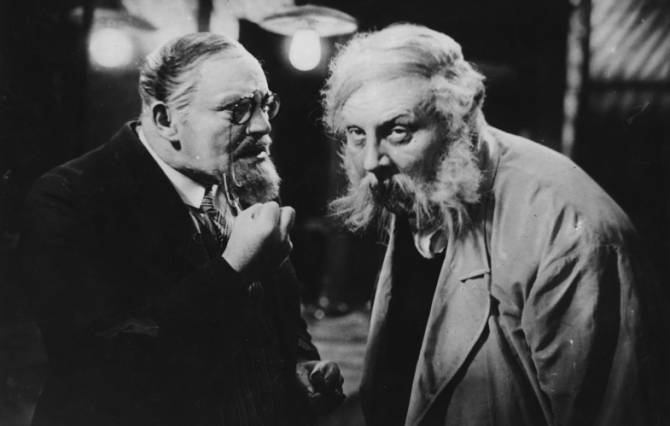
At almost any other time and in almost any other place than Weimar era Germany, the young Fritz Lang would have been the unquestioned star of that country’s cinema scene. However, the German film industry of that time was one of the most artistically rich in film history and there were many worthy film makers.
If there was one most worthy to be singled out as the shining star, then that one may well have been F(redrich) W(illhelm) Murnau. Coming from the theater, Murnau was gifted with a profound touch with actors and a finely tuned dramatic sense of cinema but the topper was his extraordinary way with visuals.
A Murnau film was always the complete package with every element combining to render the film a complete artistic whole. The stories he told tended to be simple but his method of telling them was complex. This was true of his Hollywood masterpiece Sunrise (1927) but equally so of his German one, The Last Laugh (Der Last Mann in Europe).
In the silent era there seemed to be an unofficial contest as to which director could create a coherent film with the fewest title cards (a lot of cards used to tell the story was a sign of artistic weakness and lazy storytelling). Well, the winner was Murnau and the prize entry was this film. Except for the two title cards used to introduce the satirical happy ending, it contains none (though an inscribed birthday cake does fudge a bit).
The story is plain as can possibly be: a prideful and haughty doorman (the great Emil Jannings in what may be his finest performance) at a luxurious hotel is demoted, for no other reason than age, to the lavatory attendant and suffers much heartbreaking humiliation and sorrow.
Murnau, as was the custom of the day, experiments visually throughout the film (such as the expressionistic fantasy sequence when the man dreams of showing his superiors how much strength he still possesses). Each experiment seems triumphantly right and he wisely builds the film around a worthy actor.
The film was the high point for virtually everyone involved and Murnau and Jannings were soon Hollywood bound (both for artistic success and one for box office gold). However, they would be heard from in Europe one more time before that happened. More about that effort later in the list.
8. Battleship Potemkin (1924)
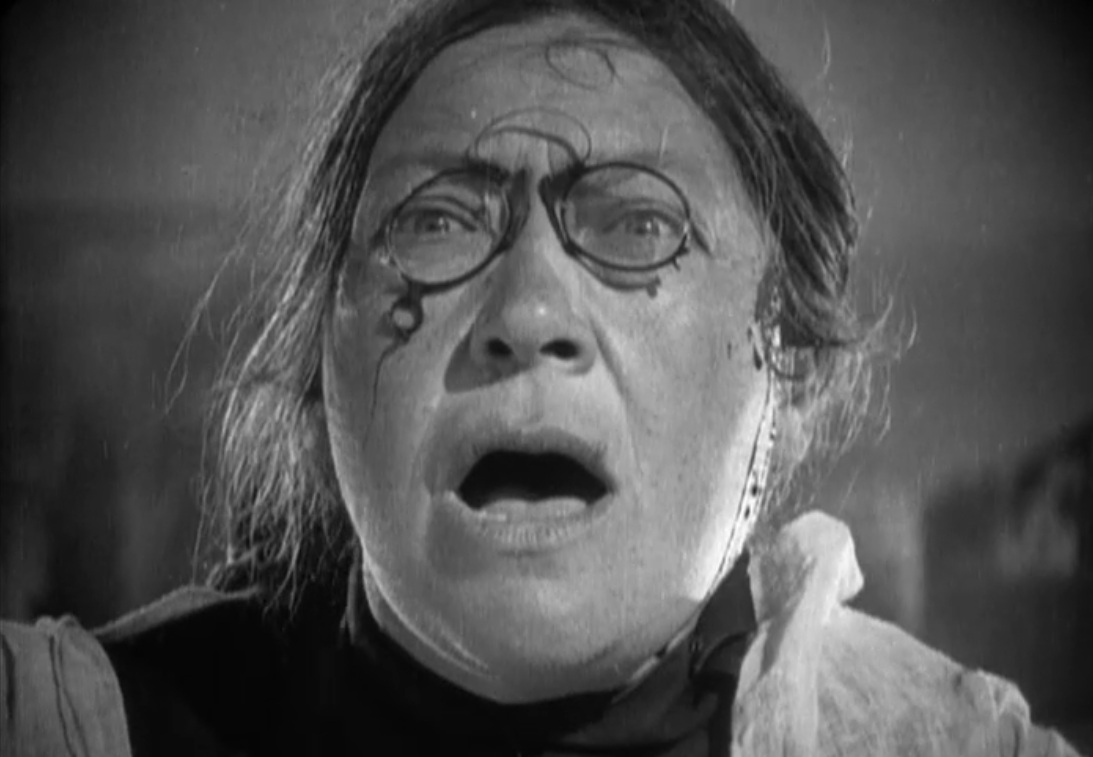
The Soviet cinema was not that well known to many outside of the U.S.S.R in its earlier days since the country was considered to have a rouge, subversive government by many western countries and its films were not generally exported. However, film makers the world over knew of the precise and incisive film making existing within the country, especially the revolutionary editing techniques being pioneered there.
The most discussed young film maker, and the best to many in later appraisals, was Sergei Eisenstein. As with many early film makers, he was a man of the theater and he also had an instinct for film making. His strong suit was his uncanny mechanical sense which enabled him to create exacting images and then edit them together in miraculous and exciting ways.
He demonstrated this admirably with his debut film, Strike, in 1924, but he truly hit pay dirt later that same year with what would eternally be his high water mark (and perhaps that of Soviet Cinema), Battleship Potemkin.
The film was based on an incident well known inside Russia, which had taken place during the ill-fated 1905 revolution in that country (the film was one of several commissioned by the government to commemorate that event). The crew of the title vessel had suffered enough under their cruel Czarist leaders and rebelled, taking over the ship. They were supported by the citizens of the coastal town of Odessa in the face of brutal suppression and eventually the spirit of brotherhood won out (objective history tells it differently).
This film is, in many ways, typical of Soviet film making of the day. There is very little concerning anything individual and it is, in the end, a hymn to the political ideas which rule the country and the masses influenced by them (and the state would have it no other way, literally).
However, Eisenstein’s imagery and editing are truly unforgettable. The edits come fast and furious and tell the tale in a snowstorm of pictures, some lasting just seconds. The highest point of all is the famed “Odessa Steps” sequence, wherein the citizens of the town, gathered on the vast ancient steps of Odessa, are expressing joyous support for the rebellious sailors when a lethal contingent of Czarist troops (quite faceless) appears out of nowhere to attack without mercy. The result is five of the most unforgettable minutes in film history (and the final image is still among the most famous in cinema).
Alas, as was usual with Soviet cinema, the director soon enough displeased his superiors and there was a lot of interference with his sequent film, 1927’s October, a disastrous trip to Hollywood and Mexico, and lots more censorship and static back home for the duration of his abbreviated career and life. However, he did have one immortal cinematic moment.
9. Faust (1926)
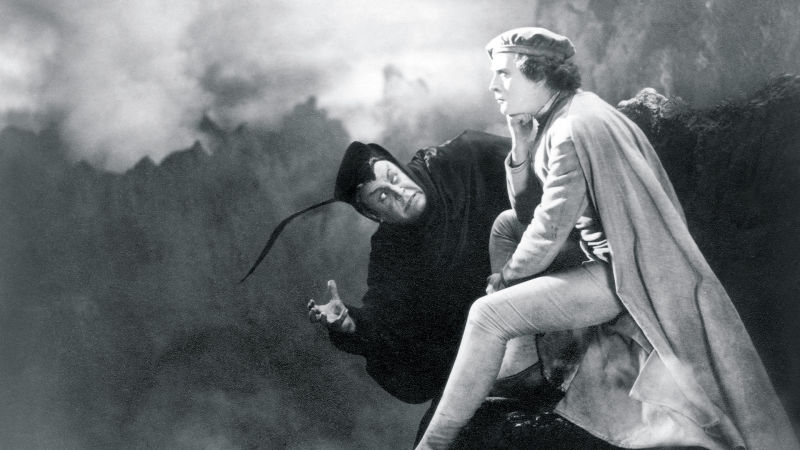
After The Last Laugh, it was inevitable that Murnau and Jannings would go to Hollywood. Before they left, though, UFA was determined to get one more joint effort from the pairing of the director and actor. To that end, they cast Jannings as yet another proud man to be humbled in the circus based triangle drama Variety (1926) with Murnau set as director.
However, Murnau set his sights on the next project on Jannings schedule, an adaptation of famed German writer Johan Goethe’s immortal tale, Faust, replacing scheduled director Ludwig Berger. (Variety became a big hit under the direction of E.A. Dupont and was the high point of his career.)
Murnau, being at his height professionally, took command and transformed the project from a medium budget effort into the costliest film in UFA’s history (until the next film on this list was made).
The plot is quite seminal: aged academic Dr Faust (Swedish star Gosta Ekman), frustrated with life, makes a pact the Mephistopheles/the Devil (Jannings, in a rich and sinister comic/dramatic performance) for youth and earthly pleasure in exchange for his immortal soul. However, the evil one tricks him and brings Faust’s love for the innocent maiden Gretchen (Camilla Horn in a role earmarked for Hollywood great Lillian Gish) to a tragic conclusion, only to have higher, better principals and spirits undo his triumph.
It’s a tale told again and again, but never better than here. Some have quibbled that it doesn’t have the emotional intensity of other Murnau films overall (though some moments undeniably do). However, no one can argue that on a visual level it stands second only to Murnau’s next film, Sunrise, which was created with Hollywood magic (and, likewise, without thought to cost).
Though the special effects can’t match the technical achievements of the modern screen on a mechanical level, they somehow are enormously effective (one seen, the opening battle in Heaven and Jannings’ unnerving demon can’t be forgotten). As fate would have it, Faust would mark the end of Murnau’s European career and, as often with his work, this film was too expensive to earn back its cost but would still stand as a critical monument to this day.
10. Metropolis (1927)
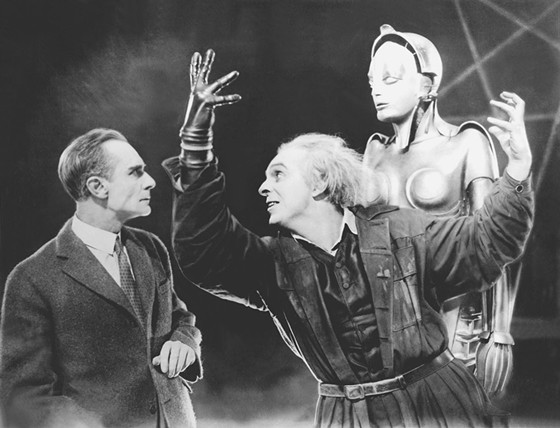
Joining and, in fact, surpassing Dr. Caligari and the 1915 famous/infamous film The Birth of a Nation as a silent still known outside of film students, is Fritz Lang’s ultra-opulent pioneering science fiction epic Metropolis. When long missing footage from the discovered in Argentina in 2007 and restored for a historic showing at the Brandenburg Gate, it made international mainstream headlines.
Images from the film are still quite familiar and any sci-fi fans worth their salt knows the film. However, while many hail its breathtaking design and stirring scenes superbly orchestrated by Lang, many others point out the uneven acting and somewhat puerile script featuring lapses in logical to a major degree (and the restoration showed that the lapses were inherent to the script, not the result of undue editing by UFA).
In the silent era, Lang always worked with wife/scriptwriter Thea von Harbou, often in films with fantastical themes. (Von Harbou was a fervent Nazi and chose not to flee the country with Lang, becoming a big force in the Nazi film industry. She was also married to regular Lang actor Rudolp Klein-Rogge, who plays mad scientist Rotwang in Metropolis, until she left him for Lang. That they all continued working together must have made things quite interesting.)
Metropolis, set in what is now the present, presents a jaw-droppingly futuristic and plush city where the upper classes live in high style. However, their luxury is bought with the labor and misery of the poor, who ceaselessly dwell and work below the surface of the city. Young Freder (Gustav Frolich), son of Metropolis ruler John Fredersen (Alfred Abel), has his social consciousness awakened by working class firebrand and visionary Maria (Bridgette Helm).
While this is taking place, Rotwang, for reasons of his own, inveigles Fredersen into a plot involving replacing the workers with androids, lead by an evil reproduction of Maria. The ensuing plot will involve schemes, uprisings, religious visions, a flood, a burning at the stake, spying and various battles. It’s all as stunning as it is silly (and H.G.Welles, the great sci-fi writer was the first to voice that opinion).
Metropolis was unevenly received upon release and had some success but at that time it was reckoned that it was mathematically impossible for the film to recoup its cost and UFA never quite recovered from it (and Lang never worked there again). Metropolis might well have been a folly but it’s one of the great ones in the history of film and a film that has meant much to many over the decades.
11. Napoleon (1927)
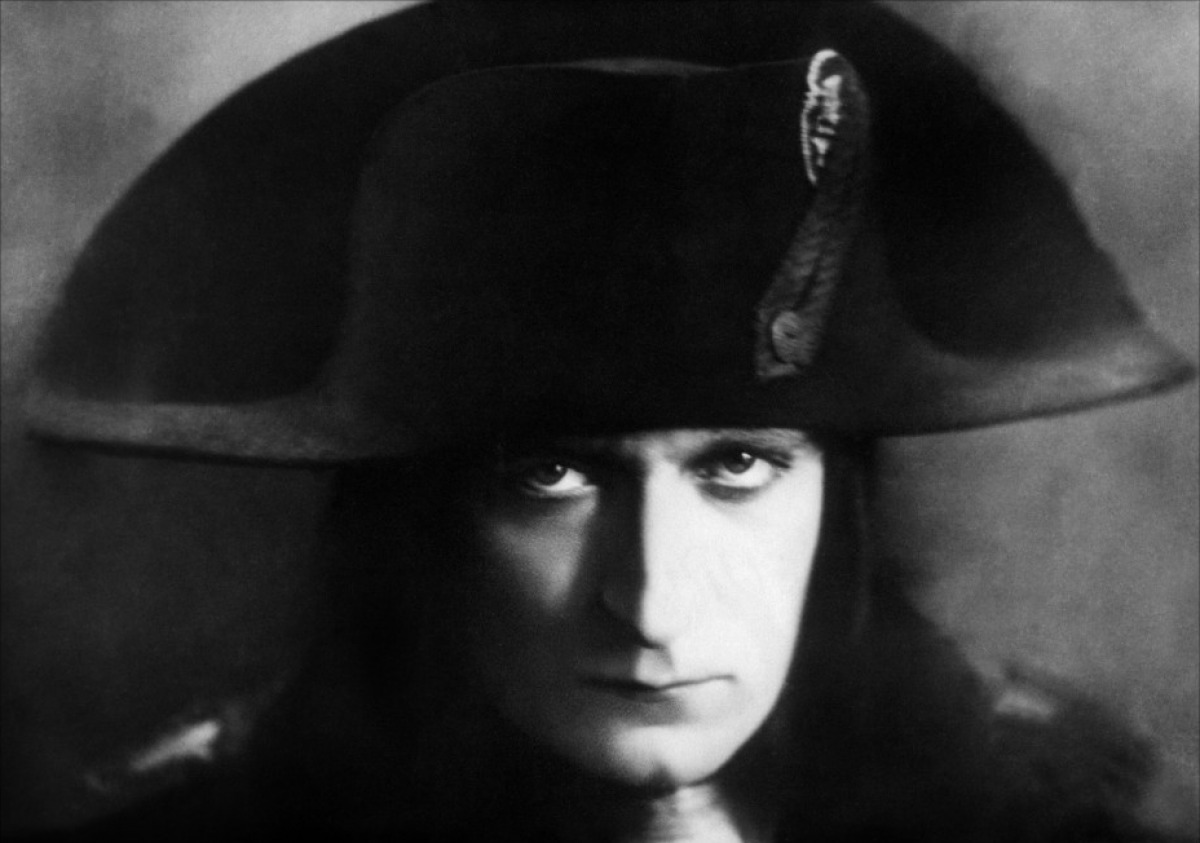
Though France’s Abel Gance didn’t have a great international career, he did create some significant productions during the silent era, notably 1919’s J’Accuse (which he later remade in 1938, enjoying his last real success with it) and the monumental and very troubled Balzac-Victor Hugo-like La Roue (edited down to some four and a half hours!).
This production foreshadowed the film which is now regarded as Gance’s masterpiece, Napoleon. Gance, who had left school at 14, drifted into acting in the theatre (and always remained an actor in addition to his other hats) and then into the new medium of film, which brought out his natural gifts.
As with many of the directorial artists on this list, he realized that the camera had to be unchained from the locked down status to which too many consigned it in the early era. He came up with method after method to liberate the camera and used and refined Eisenstein’s editing theories (edits in Gance films reach subliminal heights).
Napoleon would include his greatest innovation a triptych process called Polyvision, which projects three images, which can be both contiguous and complementing, side by side (yes, the idea was later refined as Cinerama, for which Gance received no credit).
This was to be the first of six planned films about the life of the “Little Corporal” and it traces his life from boyhood to the start of his first great military campaign. It runs between five to six hours in its complete state and such astoundingly shot and edited scenes as the snowball fight at the military school, the introduction of “La Marseillaise”, the stormy political debate intercut with Napoleon struggling alone in a rowboat in a stormy sea, and the ultra-dynamic three screen military campaign at the end are unforgettable.
Alas, some sort of cinematic curse seems to be on Napoleon. Both Charles Chaplin and Stanley Kubrick spent much money on projects concerning him which never came to life while all other films focusing on the leader have flopped at the box office…including this one.
This large scale silent epic had to come along at the moment the movies learned to talk and American distributor MGM chopped it to pieces, to no avail. Thankfully, modern day British film historian Kevin Brownlow has spent much of his life restoring, reediting, re-restoring, re-reediting and continuously searching for previously unknown or better footage from the film. He managed to premiere his first massive restoration just before Gance’s death, to thunderous acclaim, ending Gance’s life on a great note.
12. The Passion of Joan of Arc (1928)
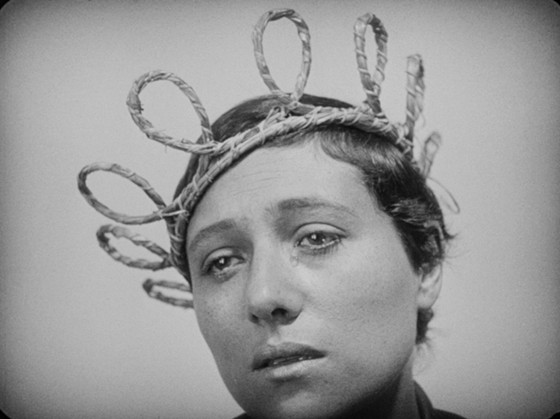
Danish director Carl Theodor Dryer was always a most thoughtful film maker. After a childhood which could only be described as Dickensian, he drifted from journalism to title card writing to writing and directing films in his native Denmark in the post World War I era.
After being reasonably prolific during the 20s and scoring hits with 1919’s The Parson’s Widow, 1922’s Leaves From Satan’s Book (much discussed in its day) and 1925’s Master of the House (along with the landmark gay drama Michael in 1924), he decided to pursue making films of intense spiritual and philosophical intent, with no concern for commercial concerns. Due to this goal and other factors, he would only direct five films (one disowned) from the late 20s until his death in the 1960s.
Unlike many of the dynamic, kinetic film makers on this list, Dreyer was calm, measured, precise, still and would not hurry the pace of his films. Those few films from the later part of his career were all critical events but to many his finest hour was his last silent, The Passion of Joan of Arc.
The film simply but powerfully details the Maid of Orleans’ trial by the English for heresy and her subsequent burning at the stake. The story is told in mostly a succession of massive close-ups with the subjects posing against stark white backgrounds (actually pale green and pink in reality).
Most of the close-ups belong to the actress playing Joan, Falconetti (whether named Maria or Renee has never been clarified). She was a comedy player with the Comédie-Française in her later career and had only been in one minor film over a decade before The Passion. She also reportedly suffered from mental illness and rumors have had it that Dreyer treated her with great cruelty in order to achieve the extraordinarily revealing and unguarded performance on display here.
This last fact is disputed but this remarkable actress never again appeared on film. Like Napoleon, Joan seems to be under a cinematic curse. Virtually every film ever made about her has been a career crushing failure. This film was supposedly lost in a fire with only a version made up of alternate takes until a pristine copy of the original version was found in a closet of a mental institution in Oslo in 1981 (and how it got there will never really be known).
When one thinks of how many promising sounding or renowned films have been lost to the sands of time, it’s remarkable that this film has survived mishap after mishap (including two fires which left only weak, dupe prints until the 1981 discovery). There is some justice in the world, after all.